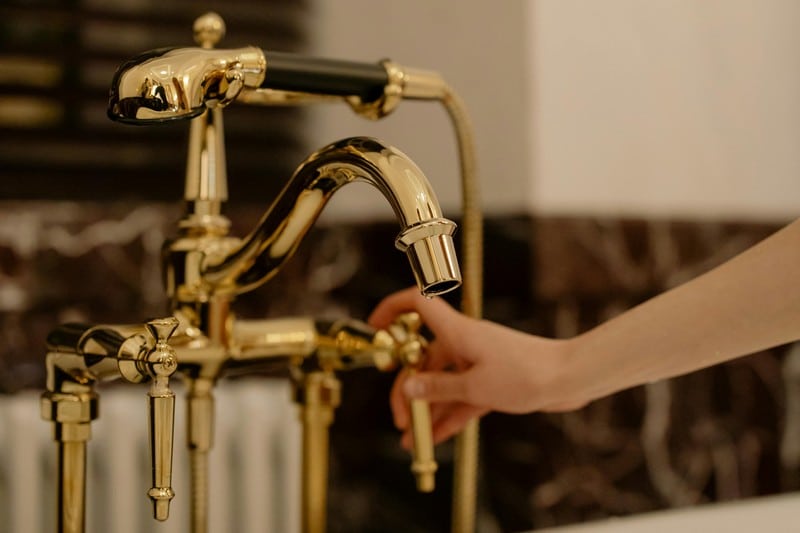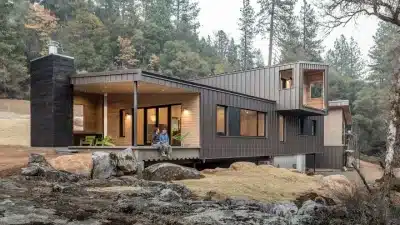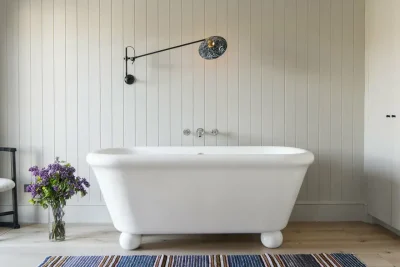
Curious about the latest developments in the way homes manage water?
The plumbing industry is experiencing a historic revolution right now. Home plumbing systems are being replaced by smarter and greener technologies at an unprecedented rate. And here’s the best part…
The new technologies are saving homeowners thousands of dollars in water bills and prevent expensive damage.
You will learn about…
- Smart Leak Detection: Your Best Defense Against Water Damage
- Greywater Recycling: Making Every Drop Count
- Smart Fixtures That Actually Save Money
- Tankless Water Heaters: The Efficient Choice
- IoT Integration: Your Plumbing System Gets Connected
- Choosing The Right Technology For Your Home
The Smart Plumbing Revolution Is Here
Homes today have intelligent monitoring and controls that can keep track of water use, identify problems before they become disasters, and automatically adjust to conserve. Whether you are calling a trusted plumber woodbridge va for professional plumbing services or doing some work yourself, familiarize yourself with these technologies so you can be a smart consumer when it comes to your home.
The global plumbing fixtures market is valued in the billions of dollars and is expanding rapidly. In fact, smart bathrooms are expanding at a compound annual growth rate of 12.1% through 2030. Homeowners are pouring money into these products and services.
Want to know why?
Because they work.
Smart Leak Detection: Your Best Defense Against Water Damage
Here’s a fun fact you may not have known…
Water damage accounts for about 23% of all homeowners’ insurance claims. That’s nearly one in four claims. The average water damage repair bill is $11,000 to $12,500.
Ouch.
But imagine if you could find leaks and shut them off before they can cause that kind of damage?
That’s exactly what smart leak detection systems do. Leak detection systems use advanced monitoring and controls to track your plumbing 24/7. The minute the sensors detect unusual water flow or moisture in areas it shouldn’t be, they send an alert to your smartphone.
The technology can include:
- Wave sensors that measure surface water movement
- Motion detectors that pick up underwater activity
- Pressure monitors that detect fluctuations
- Automatic shutoff valves that can close off water flow
Many systems use artificial intelligence to “learn” your water use patterns. This means they know the difference between normal water usage like showers and when there’s a real problem like a burst pipe.
Best of all – leaks waste about 1 trillion gallons of water every year in the US alone. By nipping leaks in the bud, homeowners can save up to 10% on their water bills. That’s a nice chunk of change.
Greywater Recycling: Making Every Drop Count
Water conservation is not just good for the environment – it’s good for your pocketbook.
Greywater recycling systems capture water from sinks, showers, and washing machines. Rather than allowing this relatively clean water to go down the drain, these systems filter it and reuse it for toilet flushing and irrigation.
Think about it. Why use fresh drinking water to flush the toilet or water your yard?
Greywater recycling systems are becoming very popular in drought-affected states like California and Arizona. Many water-stressed municipalities offer rebates to homeowners that install greywater systems.
A family of four can see water consumption reduced by 30-40% with a greywater system. That’s thousands of gallons of water per year.
Smart Fixtures That Actually Save Money
Smart toilets, faucets, and showerheads are not just high-tech toys.
They are practical devices that can help you reduce water waste and save money. Voice-activated faucets can turn the water on and off without you having to touch a handle. Smart showerheads can be preset to the temperature that each member of your family likes it. Some models even pause the water flow when you are soaping up.
Here’s what makes them so valuable…
These fixtures include flow restrictors that provide excellent water pressure while using a lot less water. In fact, the smart toilet market was valued at $9.47 billion in 2023. Experts are predicting it will grow to $23.44 billion by 2031.
Low-flow toilets alone can save 13,000 gallons per year when compared to older toilets. That’s a lot of money off your water bill every month. Many of these toilets also feature dual-flush options that give you even more control over water usage.
Tankless Water Heaters: The Efficient Choice
Traditional water heaters waste a huge amount of energy by keeping 40-50 gallons of water hot 24/7.
Tankless water heaters have completely changed the equation.
Compact units that heat the water only when you need it. No more running out of hot water in the shower. No more paying to heat water that just sits in a tank until you need it.
Tankless water heaters quickly pay for themselves by:
- Saving 24-34% energy for homes that use less than 41 gallons per day
- Lasting 20+ years, much longer than tank models
- Providing space savings with wall-mounted designs
- Delivering an endless supply of hot water
Heat pump water heaters are another very efficient option. These units use electricity to move heat from the air into the water instead of generating heat directly. This makes them up to three times more efficient than traditional electric water heaters.
Solar water heaters take efficiency a step further by using the free energy from the sun. In sunny climates, these systems can supply 50-80% of a home’s hot water demand.
IoT Integration: Your Plumbing System Gets Connected
The Internet of Things is not just about smart speakers and thermostats.
Your entire plumbing system can now be connected to a central system. One app on your smartphone can show you real-time water use, which fixtures are in use, leak alerts from sensors, and even allow you to control remote water shutoff valves.
Some systems even go so far as to give you insights on how to reduce your consumption. They’ll tell you if you’re overwatering with your irrigation system or overusing hot water.
Homeowners armed with data are better equipped to make informed decisions about their water usage. You can actually see the impact of behavior changes.
Choosing The Right Technology For Your Home
No home needs every technology.
The trick is understanding your priorities and the needs of your home. Older homes with original plumbing should invest in leak detection systems – those pipes are ticking time bombs. Homes in drought-prone areas will see the biggest benefit from greywater systems and low-flow fixtures.
Start with the basics – fix any current leaks first. You can’t install smart technology if you’re already wasting water through leaky old pipes and fixtures.
Next, consider your budget. Smart leak detectors are relatively inexpensive and provide immediate protection. Systems like greywater recycling require larger up-front costs but will save you money in the long run.
Consider your daily routines too. If you have teenagers who like long showers, smart showerheads are a great idea. If you’re at home during the day, IoT monitoring will help you catch problems as they occur.
What’s Coming Next
Plumbing technologies continue to evolve at a rapid pace.
Augmented reality tools now allow plumbers to map building systems without tearing down walls. 3D printing makes it possible to create custom parts on site. Robotic cameras are being used to inspect pipes from the inside and identify issues before they turn into emergencies.
What sounds cutting edge today will be considered standard in homes in 5 years.
Key Takeaways
Cutting edge technologies are revolutionizing how homes manage water and energy.
Smart leak detection systems prevent costly damage by identifying problems before they become disasters. Greywater recycling can save thousands of gallons per year. Connected fixtures provide homeowners with unprecedented control over their water system.
The initial investment pays for itself with lower water bills, reduced risk of water damage, increased home value, and environmental benefits.
Homeowners that embrace these technologies will save money and stress in the long run. Whether you are building new or upgrading existing systems, these innovations are worth considering.
Don’t put it off any longer. Start small if you need to, but start today.








